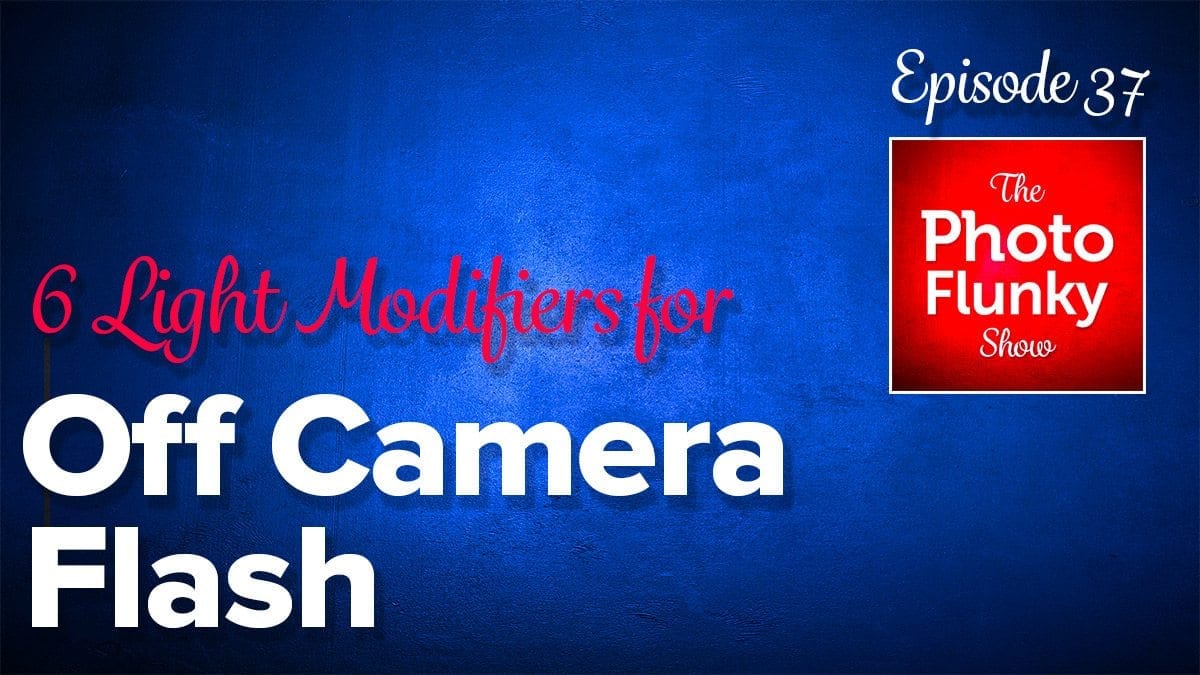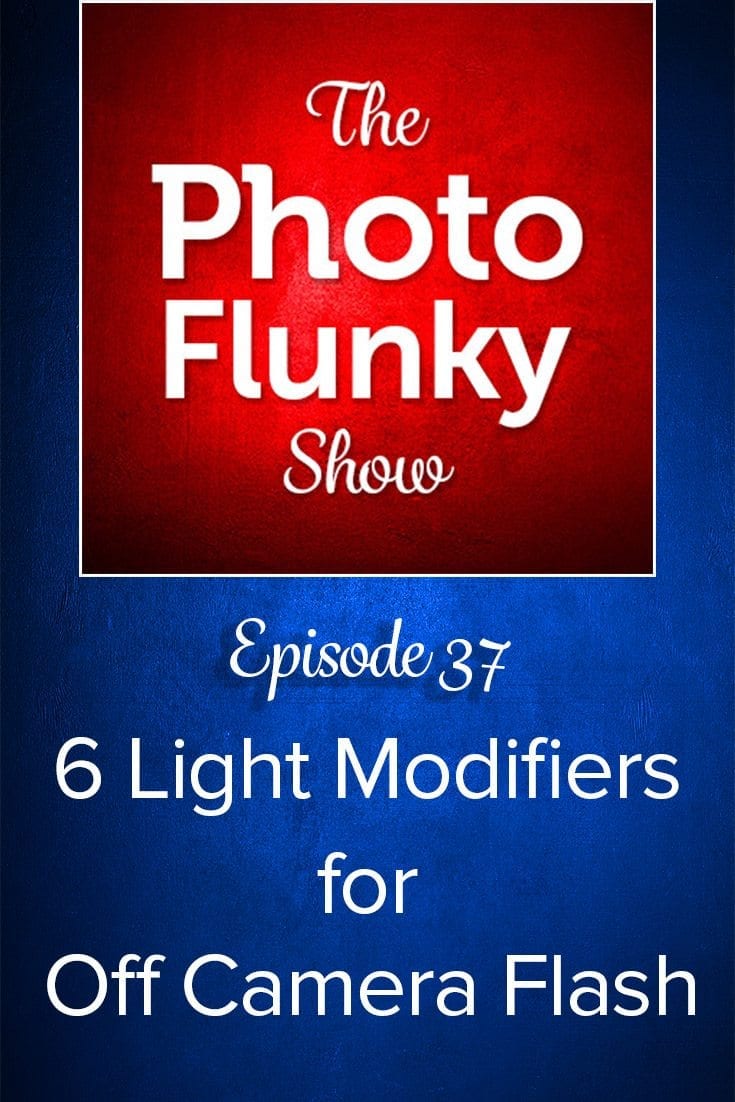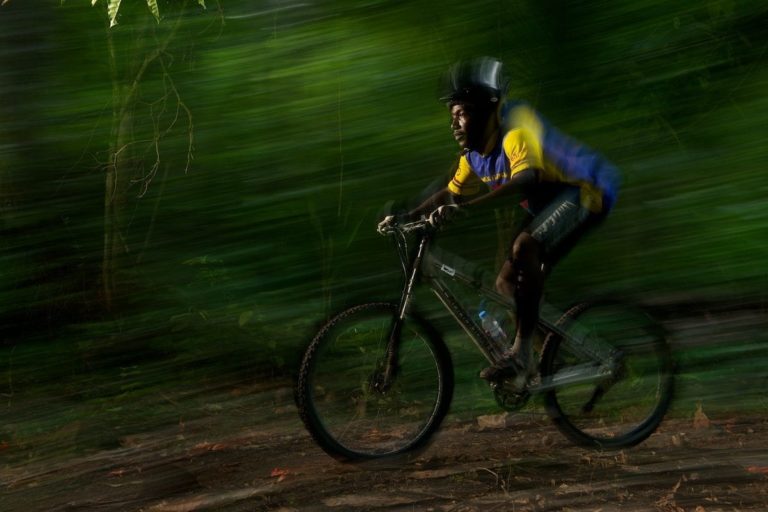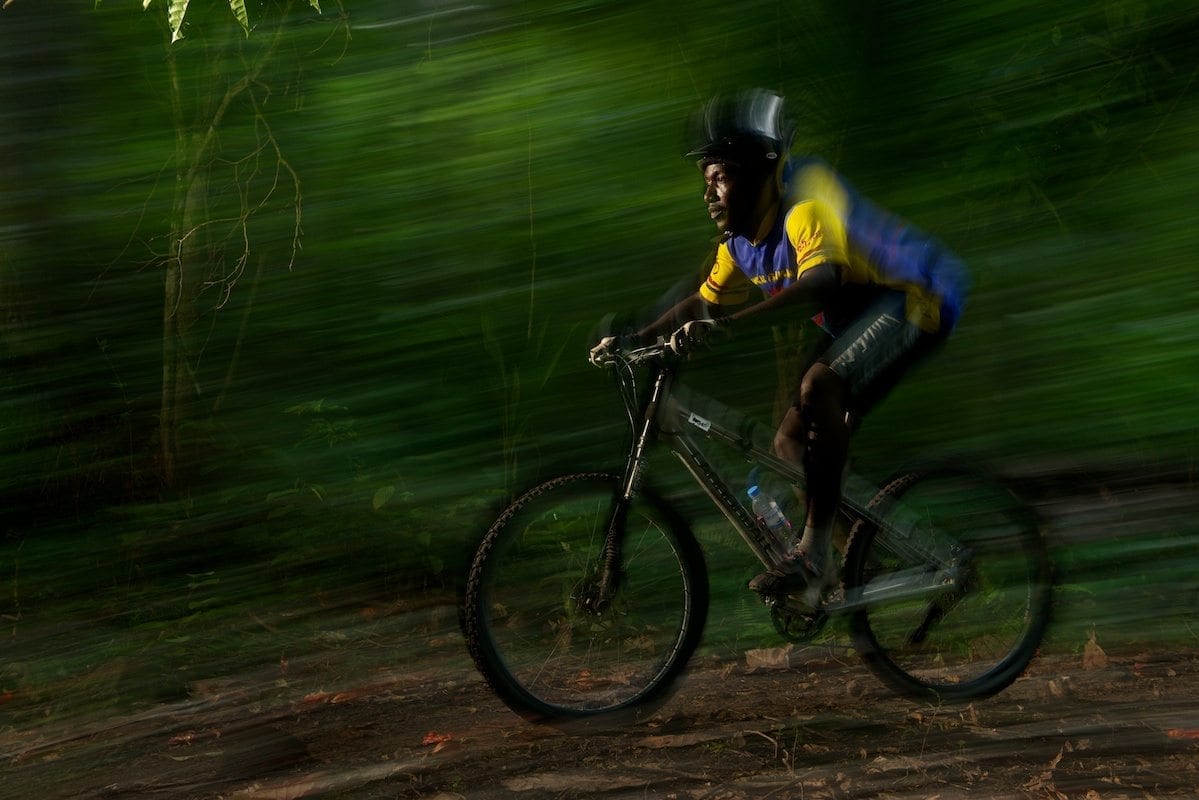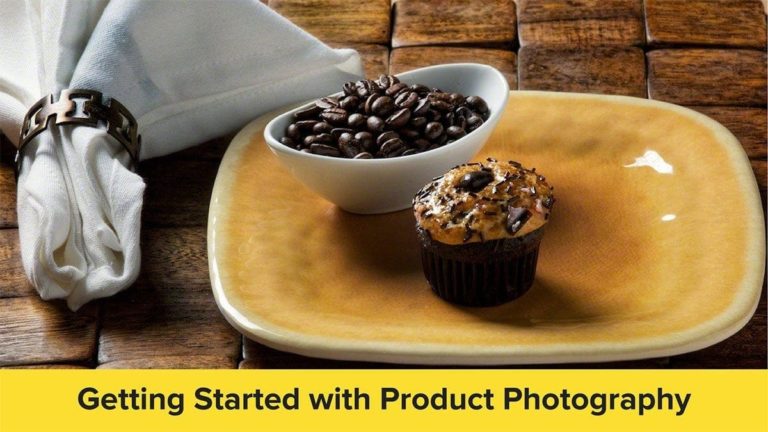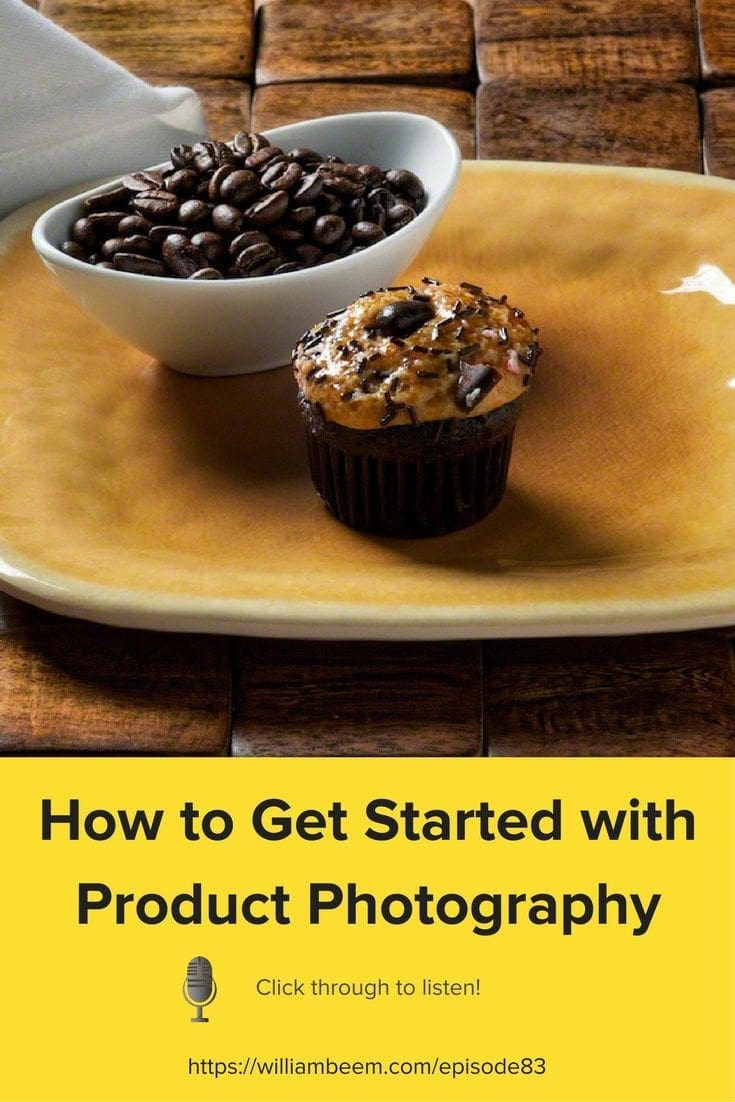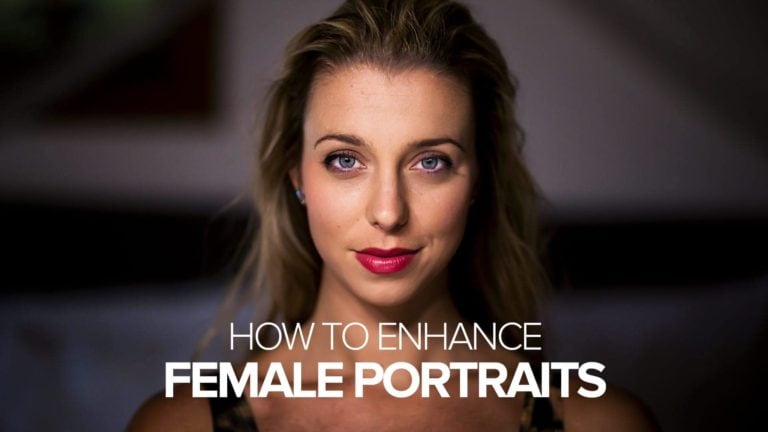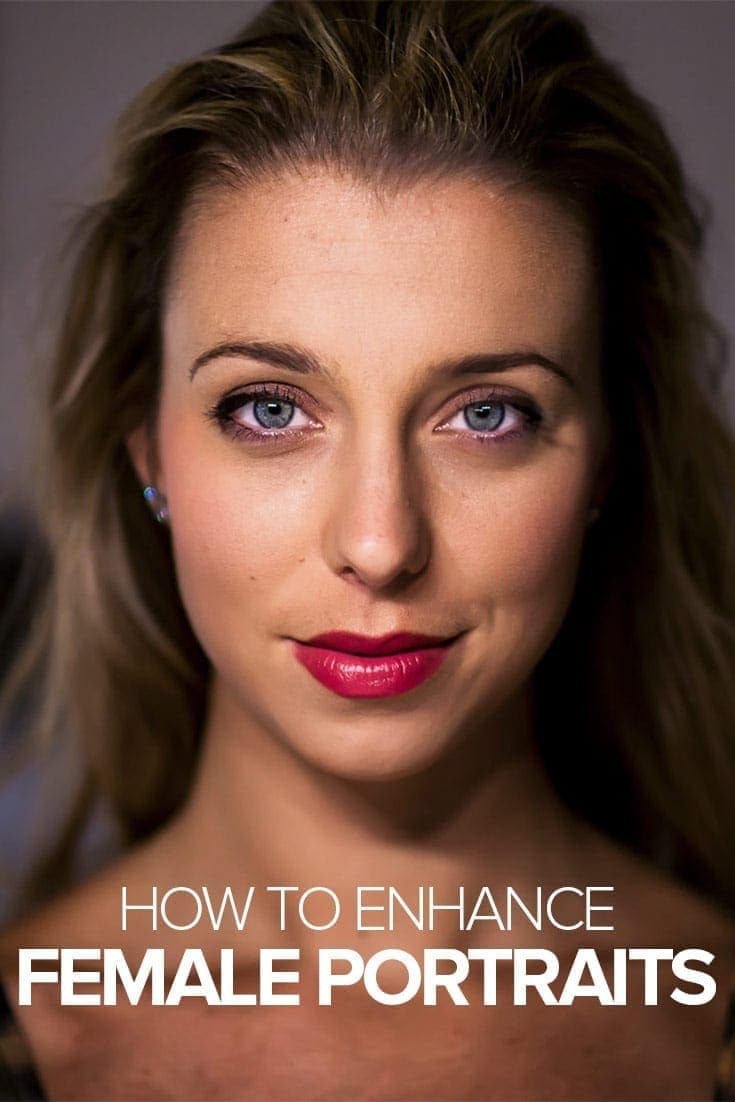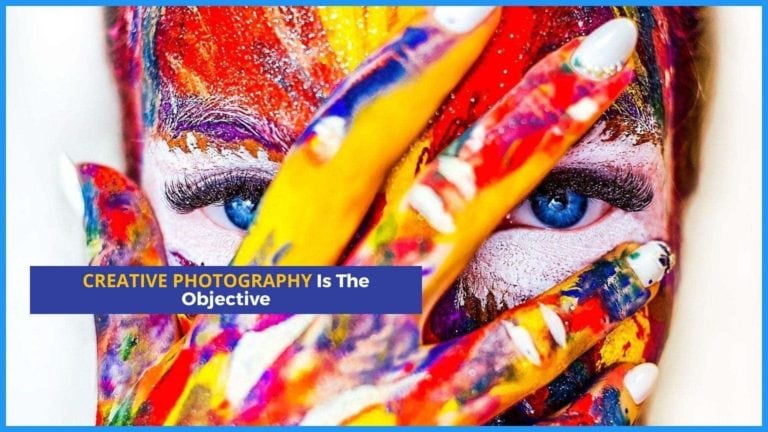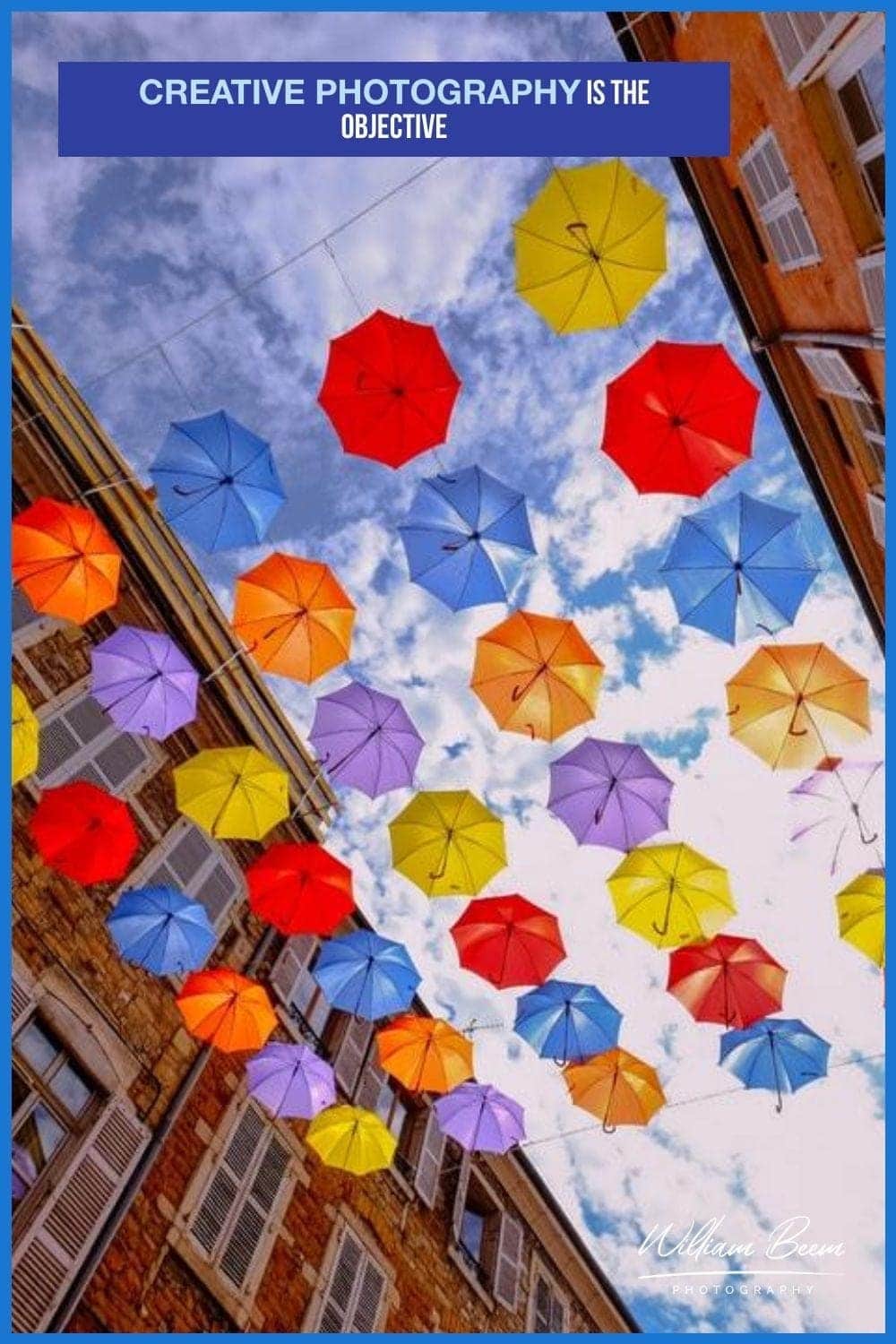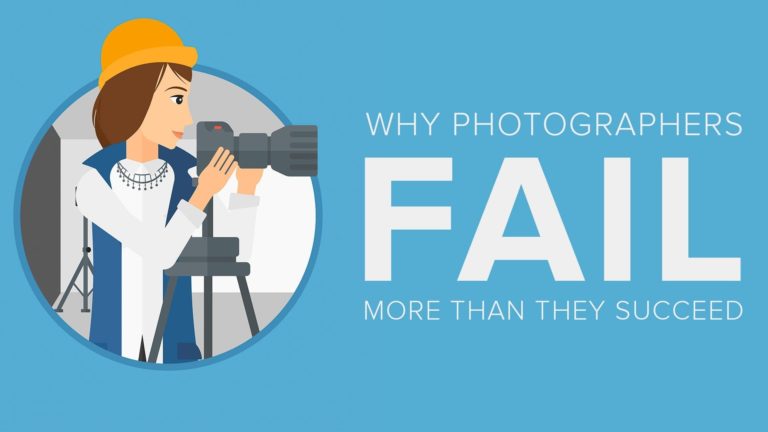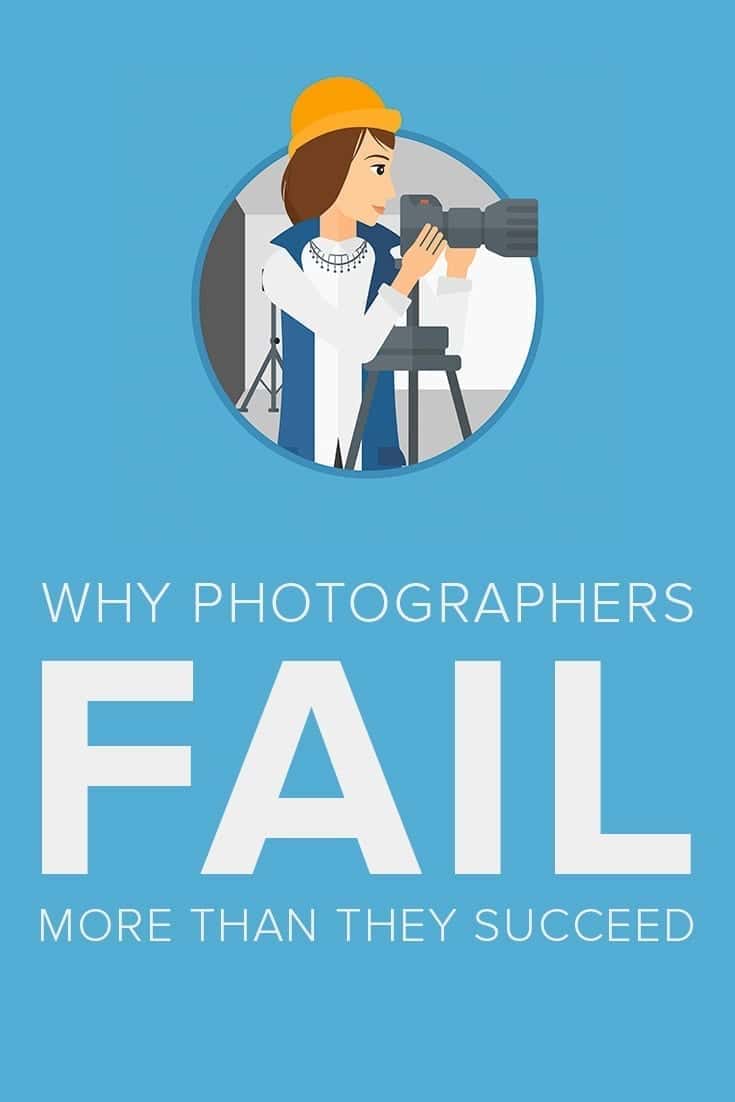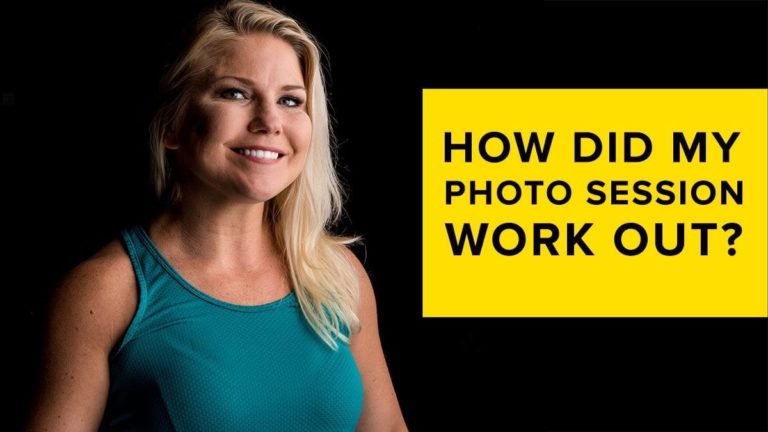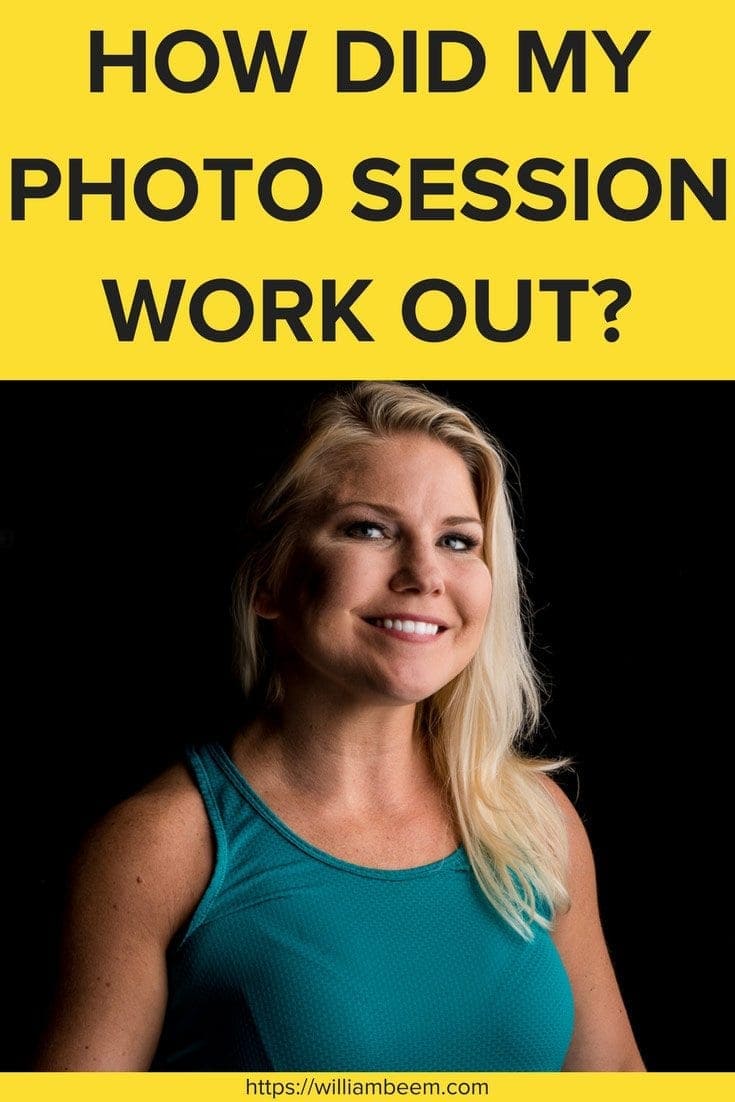Affiliate Disclosure: We earn a commission if you purchase through one of our links at no additional cost to you.
What Types of Light Modifiers Do You Need for Off Camera Flash?
Thank you for listening to The Photo Flunky Show. This show continues with Part 2 of our discussion of Off Camera Flash.
One of the most important decisions you make with off camera flash is deciding which types of light modifiers you need to use. Lee and I discuss several factors for your decision.
- Different types of light modifiers
- Why you should choose a given light modifier for your photo’s needs
- How light behaves with different light modifiers
- Some examples of using light modifiers with available sunlight
At the end of the show, we also have a bit of discussion whether or not off camera flash is right for you.
Transcript
THE PHOTO FLUNKY SHOW: Episode 37
Welcome to the Photo Flunky Show, Episode thirty-seven.
Today’s topic: We’re going to be talking about light modifiers; those little things that you put between your subject and your light source and make it change and shine and all that fun stuff.
William: Hi, thank you for joining us on the Photo Flunky Show, episode number thirty-seven. My name is William Beem.
Lee: Hey, I’m Lee Beem.
William: And today, like I said, we are going to be continuing on with our discussion about lighting and today’s topic is Light Modifiers. When you think about it, why do you need light modifiers if you’ve got a flash?
Well, basically light modifiers allow you to shape the light and make it so that you can match the mood of what you want to photograph by changing the quality and direction of the light. That’s really all you’re doing. You’re changing the quality. It comes out harsh, you want to make it soft or maybe you want to turn it into something harsh. There are ways to do that as well. Maybe you don’t want the light to go everywhere and you just want to focus it in a certain place. Light modifiers allow you to change that quality and direction of light.
Does that make sense so far?
Lee: So far, yeah.
William: You know what I mean by quality?
Lee: Yes.
William: With quality we are talking about hard versus soft and everything in between.
What you need is something that goes between your light source and your subject to make those changes and we are going to talk about some of the basic light modifiers you can use and we are going to have a little bit of a discussion about how they work.
We are also going to talk about something that is a little less common at the end of the show and we’re not going to go into it too deep, because it is rather expensive. And then we might look at some of the other reasons of cost, complication and do you really need or want to do this? That is going to vary from one person to the next.
Let’s start off with the most basic of light modifiers and that is the umbrella.
Almost everybody starts off with an umbrella for a simple reason. It’s very inexpensive. It’s very easy to find. There are plenty of them out there and they come in different sizes. You can get them from large to small. I’ve got umbrellas that are as small as maybe eighteen inches and I’ve seen them go up to about seven feet!
Lee: Wow!
William: Seven feet is a huge umbrella and that is going to give you a really soft quality of light, because if you really want soft wrapping light, you want a large source of light and you want it as close as you can get to your subject.
A seven foot umbrella that’s not too far from your subject is going to give you very soft light and it’s only like $100 or so. You may find it a little bit more or less, depending on where you’re shopping and who’s making it, but there are a couple of different kinds of umbrellas.
One is the kind that you shine your light, whether it’s a flash or studio strobe, into the umbrella and then it bounces back out at your subject.
Lee: Can I just ask you something about the umbrella? You were talking about the really big ones and really small ones. Would the size of your light have to be related to the size of the umbrella, or not at all?
William: Not really. You can use that seven foot umbrella that I was talking about. I’ve seen people using that with a small hotshoe flash and it provided plenty of power to go ahead and photograph a group of people.
Lee: So your umbrella goes close to your subject, not close to the light?
William: That’s a good point in itself. If you are talking about soft light, the apparent light source to your subject is the end of the soft box or the end of the source of light. So for them it’s not the flash that’s behind the umbrella; it’s the umbrella itself if it’s a shoot-through and it’s pointing at them.
Lee: OK. The reason I asked that is because when you get your light modifiers that you might use over an off camera flash, those things are usually … there’s some way to attach them to the flash, so they are not necessarily close to the subject. Those are close to the light. So I always thought that it had to be a certain distance from the light, just because they had some way to attach.
William: Well, there are a couple of things to keep in mind when you’re doing that. So let’s talk first about soft light for your subject.
If you’re doing a shoot-through umbrella, in other words the flash is behind the part where the umbrella opens, and you are shooting through the umbrella and then going to your subject, the umbrella material itself is the source of light as far as the subject is concerned. You want that as close as possible to your subject to create large, soft light.
Lee: OK.
William: Now, the other part of that is where does your flash head go on the umbrella stand?
Lee: The frame?
William: Yeah. So where does it go? The closer you get it to the diffusion material in the umbrella, the more it’s going to concentrate its light in the center, and it may not necessarily fill up all the volume of the umbrella, depending upon the size of it. So you may want to back off your light so that it spreads out a bit more to fill up more of the diffusion material and allow that to go to your subject.
Otherwise, let’s use an example. You’ve got a seven foot umbrella and from the point where the diffusion material is, you only put your flash maybe eight inches back. You’re going to have a really tight, hot beam right in the center. And that may create a hot spot for your subject and you may not be getting the full value of the seven foot if you are using that size umbrella.
Lee: Alright.
William: You back that flash up and the light has more chance to spread around and hit the rest of the umbrella from the center point out to the edge of the umbrella and then you’re using more of that as the apparent light source for your subject.
Lee: Oh, so it’s like using a sprinkler attachment on a garden hose? The further away you stand the wider the spray; if you get close up to it, it kind of concentrates the spray into that one point.
William: In a sense, yes. I mean when the light comes out of the flash head, there’s a good portion of it that’s going to be going straight. Light is still going to be spreading out in all different directions, but how much of that light spreads is kind of like a cone.
From the source it’s going to go out as a cone and then keep getting wider and wider. So you want to match up the size of your umbrella to the distribution of light of your flash.
It sounds complicated, but it’s really not because if you are seeing a shadow on the rim of your umbrella going on your background, then you might need to move your flash a bit forward so it’s not casting that shadow and it’s just going through the diffusion material.
Lee: Right. OK.
William: Does that help?
Lee: It does. It actually makes sense in my head. My problem is when it comes to practical application and then suddenly I feel overwhelmed again.
William: It’s a matter of experience and that’s why you start with an umbrella because, quite honestly, it’s inexpensive and it’s easy to do. You don’t want to dive into this head first and go buy a whole bunch of gear and then find out, I don’t like this; I don’t want this or any other thing that makes you decide you want to put it away. Then you’ve either got to take a loss or sell off your gear and maybe take a little bit of a loss.
By all means, I would say start off with one umbrella and a light stand, a small inexpensive flash, and just learn how the lighting works. Then you kind of progress from there.
Lee: Would the size of your work space also determine the size of the light modifier – in this case the umbrella – that you’re using?
William: Your subject is going to dictate what size light source you need, whether it’s an umbrella, a reflection panel, a soft box …. In other words, if you have to cover five or six people, a small umbrella that’s eighteen inches is not going to cast enough light.
Lee: I understand that. Right.
William: So your subject that you’re going to start off with. Most people I would think would start off with either still life or with one portrait subject. You’re probably going to get a small umbrella that maybe is eighteen to thirty-six inches.
Lee: Alright.
William: That’s where you practice. And you kind of start shooting and saying, how much power do you need on your flash? What are your exposure settings going to be? What kind of shadows are you casting on your subject and then where do you need another light or some sort of fill in order to kind of balance out, maybe if you’re getting a harsh shadow.
You say, I thought this was supposed to be soft light? Well, the light is soft, but it also has fall-off. Depending on where that light falls off, you may need another light or a bounce or something like that to fill in the areas where it can’t reach.
So if you’re taking a photo of a portrait subject and you’re shooting at their head and the light is coming from, let’s say the left hand angle, you may have some darkness on the right side because the light simply isn’t going to wrap around it.
Lee: OK, I remember that from a shoot we did in our living room once.
William: Exactly.
So the light is blocked by the other side of your face. So you are going to have that dark side and that’s why you occasionally see in portraits, typically with men, there’s lighting on one side right down the middle of their nose and then it’s dark on the other side.
To me that’s kind of a creepy portrait, but it’s also something you can do with lighting that you couldn’t necessarily do with available light.
Lee: Alright, I understand that. So if you were using an umbrella and it’s on the smaller end, the smaller the umbrella, the more likely it is that you’re going to need something else to help either bounce or fill the light somewhere else?
William: Exactly.
Lee: OK.
William: And the size of the light modifier that you get really depends on how many subjects you get and also how far away you’re going to put your light.
That comes down to something called an apparent light source. So let’s say that you have a soft box that is two feet by two feet; something manageable. You can get that in really close.
Now let’s say that you’ve got one that is three times larger; it’s six feet by six feet. That is a large light source! But if you pull that light source back far enough, it is no softer than the two by two that you get in close to somebody’s face. So if you want all the benefit of that six by six soft box, you need to bring it in right up close to them.
Lee: OK, because I was going to ask if it would not make sense then for somebody to just save up and put out for the biggest umbrella or soft box that they could afford.
William: I wouldn’t do that to start. If you’re a beginner, I would just get a beginner kit and start with that and learn how light works. Then you can make intelligent decisions about whether you want another umbrella or if you want to move on to a different kind of light modifier. Or do you even want to do lighting at all?
Lee: Alright.
William: And that’s kind of what we’re talking about here. We are talking about people who are just beginning lighting, what you need and some of the things that you think about before you start investing money in it. This can add up and it can be complicated. So before you dive into that head first, you want to understand what you’re getting into.
Alright, so we go back to the umbrellas. There are two kinds. There is the bounce, where the point of it is facing away from your subject, the light is hitting that and reflecting back off. So in other words, it’s not going to be a translucent diffuse material. It’s going to be something shiny, typically. It’s either going to be white, silver or gold and it’s going to reflect back on your subject.
The differences between those materials inside is how you want that light to come back. If it’s white, it’s going to have a softer result coming back; silver is going to be a bit harsher; gold is going to have a bit of a warm color cast to it. So it’s going to have the same amount of light as the silver one, but it’s going to be a bit warmer.
Lee: That could work nicely for portraits and food.
William: It could. But the other problem is it scatters light everywhere. In other words, you’re going to have a large – we talked about that cone of light earlier with the flash – when you have an umbrella and you’re bouncing light into it, you’re going to have an extremely large cone of light. If you want to light five or six people, that might be a good way to do it, because you need a lot of light to go all over the place. It’s not going to be necessarily the most directional light that you want, but it’s going to cover the source and it will get the job done for you.
Lee: OK, so the metallic types would spread the light around more than just the white one?
William: The white one is going to be a bit softer. In other words, you’re probably not going to get as much power coming back at you and if you measure the light source, you are probably not going to get as much measurement of the exposure of the light coming back as you do with a metal reflector.
Lee: OK.
William: Now the shoot-through is going to be a different type of material. That’s typically going to be white; it’s going to be translucent material. The nice part about that is it’s a bit more directional, you can get it closer to your subject because you don’t have to worry about the back of the light where the stand is and everything facing your subject. So you can get that point right up to your subject and pull it just a little bit out of the frame.
It’s going to give you a nice soft light. You can use it either with flash or strobes. The down side of that is you are going to lose a bit of power. In other words, when the flash hits that diffusion material, you are going to lose about a stop of light. Your exposure value has to compensate for the amount of light that you lost.
If you shot flash with the same settings without the umbrella shoot-through as you did with the umbrella shoot-through, you are going to see the one with the umbrella is going to be about one stop darker than if it’s just the raw flash power.
In other words, you’ve got to compensate for that. You might have to open up your shutter a little bit, you might have to bump up your ISO a stop, but you need to understand that when you go through diffusion material, you are going to lose roughly a stop of light. But it’s worth it.
Lee: I understand that now.
William: The thing with umbrellas is they work really great indoors. They are light, they are easy to set up, they are easy to move around. You take them outdoors and the first, slightest little gust of wind is going to ….
Lee: Mary Poppins you!
William: Oh yeah. And it’s going to attach your subject, particularly if you’re doing a shoot-through and the wind comes at it. It’s just going to blow it right in the direction that the umbrella is facing.
They are downright dangerous for some people.
Lee: OK, I won’t mess with those on a windy day.
William: I mean, you can get sand bags and things to lock them down, but still, if the wind comes through and hits an umbrella, it’s a sailboat.
As I said before, the good thing about umbrellas is that they are inexpensive and they can be very large. It is really a great place to start. It may not be what you want to use at the end of your lighting journey, but it’s a place where almost everybody starts and for good reason. It works, it’s simple and you can do little tricks with umbrellas.
Let me think about this. Joe McNally has a Lastolite product for an umbrella. It’s a shoot-through umbrella, but he also has a cover that goes on it that kind of opens up. So in other words, you can block off part of the area and just have a little square where the light comes through.
In other words, you can use that umbrella – it’s cheap – and you can kind of almost use it as a soft box and let light through in a smaller area where you want to focus the light, whereas a typical uncovered umbrella would just shoot the light kind of all over the place.
Lee: So you can control the channel of the light?
William: Yes, so that’s one product that I’m aware of from Lastolite and I’ll put a link to that in the show notes.
Like I said, it’s inexpensive, it’s easy and it’s a good place to start, just so long as you don’t do it outdoors where it attacks your subjects.
Alright, the next things we’re going to move onto are diffusion panels and reflectors.
A diffusion panel really is nothing more than … some people call them scrims, but it’s not exactly the right term because scrims change based upon which side you’re lighting them on. If you’ve got a diffusion panel, it’s the same kind of source material that we’re talking about. It’s kind of white, it’s translucent, you’ll lose about a stop of light going through it and they will typically come in either square or rectangle shapes.
The larger ones you may see three by six diffusion panels; you’ll find those that may have an aluminum railing around the side so you can mount them on a light stand or you can have some helpers or assistants out there holding them for you.
Those things are great. You can get beautiful quality of light and you don’t necessarily need a flash. You can put that up close to your subject and get beautiful light just from the sun. If you’ve got harsh light coming in, you put up a diffusion panel, you’ve got beautiful light.
I mentioned Joe McNally before on his product, but this is one of the examples that he did when I was with him in Cuba on the group that he was leading there from the Santa Fe workshops. We had a really hard light; bright, clear day and there was a cowboy that came up and Joe went into a little girl’s bedroom and took a bed sheet and this was maybe three feet by four feet. He had another person hold it up, got it really close to the man’s face and the light was just glowing and beautiful and wonderful stuff!
So you don’t need to spend a lot of money. A bed sheet can be a diffusion panel.
Lee: So it just filtered the light for you.
William: That’s if you’ve got hard light coming from the sun and you’ve got a source there that you can do it and maybe an assistant to help you. But if you don’t have that, diffusion panels can still be great if you have a small flash or a studio strobe. It’s the same kind of concept. You’re putting your light through a diffusion panel to soften it up and spread out the light.
So when we talk about diffusion, it literally takes the direction of the light that is traveling, each little photon or each little wave, depending on your philosophical bent and it spreads it out; it changes its direction. And by doing that to enough of them, instead of having a whole bunch of them there concentrated in one direction, it spreads the light in multiple directions and then you get a nice, softer effect on your subject rather than all the light just pounding on it.
Lee: So you’re going to have to adjust your exposure again because of that, the same way you did with the umbrella.
William: Absolutely, because you are still going to lose a stop of light when you’re covering up like that, but you can get beautiful light that way and you can still use that with the sun.
Remember what I said at the beginning. This is between your light source and your subject. It doesn’t matter if your light source is a flash or the sun or anything else. So long as it’s a source of light, it’s all the same; put it through the diffusion panel and it will do the same job, no matter who’s shining the light at it.
Lee: OK.
William: You can also get little diffusers. I’ve got some called TriGrip. Again, I’ll put a link to those in the show notes. TriGrip works for both reflectors and diffusion panels and some of them you can get an all in one kit.
So the nice thing about TriGrip diffusion panels is there is a little grip at the end. It’s a rubber grip. It’s easy to hold if you’re working by yourself and it kind of spreads out in a triangle shape so you can hold your camera in one hand, you can hold the grip of the diffuser in the other and have the light go through the diffuser. It’s just a really handy, convenient way to do it.
There are other brands besides TriGrip that will maybe have circular ones. These things just fold out and they kind of pop. You know, you fold them up in a small circle so they are easy to carry and then when you need them you just flip them out and they pop open and then you’ve got an instant diffusion panel or an instant reflector.
Reflectors are kind of the same thing I talked about with the material with the bounce umbrella. You may have white on one side, you may have silver on another side or they may be silver on one side or gold on one side. It depends on what you buy and how you do it.
The one I mentioned as a kit from Lastolite was a diffusion panel inside and then there was a cover that you would zipper over it that would have silver on one side and gold on the other. So that way the same thing could serve more than one purpose for you. Not at the same time, obviously, but if I need diffusion today or deflection tomorrow, I’ve got it all in one.
Lee: You don’t have to pack a whole kit bag for three different things.
William: Of course.
Now the difference between a diffusion panel and a reflector: Diffusion, the light is going to be going through the material on your subject; Reflector, as it says in the title, the light is going to shine on that surface and then bounce back to your subject.
Be careful of this if your subject is a model because you can really blind somebody with these things.
But often I think it is best if you can have an assistant that can hold the light, depending on the size that you get. The one that I mentioned may have been thirty-six inches, but you can find these six feet, twelve feet …. You start paying a bit more money, the larger the size goes.
But six by three is a fairly common size to get. You can hold that up and you can get a body length of reflection for your subject and just angle it. The nice thing about reflectors like this is they’ve got the same material that folds up and then snaps open so you can bend them a little bit. So if the light isn’t coming exactly where you want it, you can have your assistant move his or her hand over and bend the material and get the light shining just exactly where you need it on your subject.
Lee: So it’s flexible and easy to manipulate.
William: Yeah.
Lee: So when would you need a really big one? When would that be beneficial? Would that be if you are doing a full body shot or you’ve got a large area where you want to bounce some light back onto them?
William: Or you have more people that you want to cover.
Lee: OK.
William: So for a full body shot, I would like to have a reflector that is the size of the full body or larger.
And again, keep in mind, you want a light source that is typically as large as you can get because even though you are reflecting and that sometimes can be kind of harsh off the metallic material, the larger the light source is, the softer it’s going to go back to your subject.
Lee: That’s true. OK.
William: Keep in mind I’m going to use the reflectors a bit later on in a different context and that’s what I’ve been using for some of my studio lights.
So there are two uses of the word ‘reflector’ here. This one we’re definitely talking about some panels that you open up to reflect light back onto your subject.
And you can use them for bounce. I mentioned earlier that you may be shooting from one side and you’ve got darkness on the other side. Well, you put up your reflector over there and it’s not as strong of a light source, so it will capture whatever you’ve shot from one side and bounce it back and fill in light on the other side.
Lee: So you don’t lose your shadow definition, but it softens those harsh darks and lights.
William: Exactly. In other words, it’s not quite as hard of a shadow as it may have been.
In some cases if you’re doing a beauty shot, you may have your subject just hold a reflector just below chest level with the arms straight out and the light that’s coming from above will come down and bounce off of that and then reflect up in the chin and neck area and kind of put some light on that so it’s not just lost in shadow.
Alright, the next things we’re going to talk about are soft boxes. Everybody loves soft boxes. This is kind of what you want to get into eventually if you’re going to proceed with light modifiers and off camera lighting.
So what is a soft box? It is literally nothing more than the same translucent material with some dark material around it that’s kind of in a box shape that you put your light inside of that box. So the light doesn’t spread out from left or right or top or bottom. It only goes straight through the diffusion material. That is, once again, there to not only soften the light, but also narrow the cone of travel. It’s there to kind of guide your light to the subject. So we mentioned before at the beginning that the purpose is to change the quality and direction of your light. That’s exactly what a soft box does. It blocks off the direction off to the sides and top and bottom and changes the quality that’s coming out the front.
How much does it do that? Well, that depends on a couple of things. The size of your soft box. You can get very big soft boxes; you can get very small soft boxes that you put on your flash head and they just shoot through only a couple of inches away from the flash head and you can get it right in somebody’s face and have a nice soft quality of light.
Does it really matter what size you get? Yes and no. Here’s why I say that, and I hate giving an answer like that.
Remember what we’re talking about for soft light is apparent to your subject. Let’s say that you have a big, six by six soft box that is twelve feet away.
Lee: OK.
William: Then you get a small soft box that’s maybe one foot by one foot. You come up close to your subject and your subject is looking at you and the soft box. At some point you’re going to get close enough to your subject with that soft box that it is going to appear the same size or larger than the soft box that is further away.
Lee: Proximity right?
William: It’s proximity. So if you get closer, the one by one soft box appears to this person larger than what the one is that is twelve feet away, then you’ve got a less expensive way of creating softer light than the big one. But that’s only going to work up for a head shot; something close to your face.
If you need to light the whole body or if you need to light a group, you are going to want that larger soft box.
Or, for another example, if you for some reason just cannot get your light that close to your subject, and there are situations like that. I’ve seen photographs of a helicopter crew. Well, you need to get the helicopter in the shot, you need to get the crew in the shot, you can’t get a little one by one foot box in there and shoot what you need to do.
Lee: So if you’ve got something in the background that is fairly large or if you don’t want to lose your background …
William: And you need to light it as well as the crew in front of it.
So that’s an example of what size you buy depends on what you’re going to shoot and how you’re going to shoot it.
Lee: OK, so there’s not really a case of “I’ll get this one and that will cover all my needs”?
William: No. It’s nice to think that, but it just never really works out that easy.
Lee: So it’s more specific.
William: You’ve got to look at your subject to say, how much of this subject do I need to light? And then you think about what is the quality if light I need on my subject? And then you think about your light modifiers. What is the cone of light that this will put out at a certain distance and how soft will it be when it gets there?
So the further away you have to be, typically, the larger the source you want it to be.
Lee: OK, that makes sense to me.
William: Soft boxes typically can be square, they can be rectangles; one of the ones I love the most is something called a strip light and that is something that might be very narrow, but yet very tall. So I don’t necessarily want light going everywhere, but I want a little slit of light coming in from the side. You’ll see this used for ads and maybe for wine bottles. Sometimes you’ll see it for full length portraits where there is just kind of side lighting on somebody or maybe catching the rim light from behind. Then they will use another larger light or a beauty dish for a head shot.
I know, it’s getting confusing.
Lee: Well, I’m just kind of interested in these shapes now. Why? I understand the strip has a specific purpose. What’s the difference between a square one and round one and a however-many-corners one?
William: Octobox. Yeah.
So the ones I have, for the most part, the larger ones I use are octoboxes.
Lee: See, to me that’s just more pieces of Velcro!
William: It is more pieces of Velcro. It really is. And you know what the difference is?
Lee: No.
William: Nothing. Other than the shape of the catch light in someone’s eye.
Lee: Hmmm….
William: The light coming through that is still going through the same kind of motion that I was talking about. You want to have the diffuser on front to change the quality of light and you want to have something on the sides and top and bottom to shape the direction of the light.
Now the reason that I have mine is because they have a couple of features inside. There is what is called a deflector and what that is, is kind of like a round, small dish on the end of a stick. I push the stick into my Elinchrom strobe lights and right in front of the flash bulb the first thing it sees is this deflector. And they make them where they are white or they are silver or gold, so that kind of changes the color or the quality of the light a little bit there. And then it bounces the light back at the back of the Octobox. And from there it spreads out and goes through the front.
Now in addition to that, there is something called an interior baffle. All that is, is another smaller layer of diffusion. So you put that in the soft box and then there is the big layer of diffusion at the end.
If I put all those things together, I’m going to have a flash bulb hitting that little small dish, bouncing backwards, coming through a smaller diffusion layer, it hits that and gets softened. It continues through and then it hits another layer of diffusion and it gets softened a bit more.
So I can create some beautifully soft light with that Octobox and since, depending on which one I use, I’ve got one that is fifty-three inches and another one that is thirty-six inches, so depending on the size I need that is a large light source for most of the things I need to do and it has beautiful, wonderfully soft light.
You pay for that!
Lee: But why the Octobox instead of a round or square or whatever other shape you get? Except for the strip one, which to me makes sense for a different purpose. What is the catch light shape?
William: When you look at a photograph and you’re looking inside of the headshot and you see the eyes, there is going to be a little catch light in there. It could be square; it could be round.
Lee: OK. Or it could have eight corners?
William: Yep.
Lee: You like eight corners?
William: It is really not a big deal for the lighting. If you are finicky about what kind of catch light you want – in other words if someone says, “Why is there a box in her eyes?” – that looks a bit manmade.
Lee: OK.
William: But if you see somebody and they have got a little circle of light in their eyes, you almost think, well, I’m used to seeing light as a circle of light. So if it’s coming from the sun or even from a light up above; you’re used to seeing little remnants of light in the shape of a circle.
Lee: OK so that’s the closest you get to a round light?
William: For a soft box like that, yes.
Lee: Alright, now I understand.
William: It’s not really going to be that big of a difference as far as the quality of light. It’s not going to change the direction of light so much. The interior things will do a little bit of that. You can play some tricks with that.
So for example, you could take off that exterior baffle, have the little dish inside the deflector and the interior baffle and shoot it that way. You are going to get a bit of a harder quality of light coming out, because it’s not going through that second diffusion panel. Sometimes that gives you a little bit of a deeper look and maybe a bit more harder lines on the shadow on the chin, but still lights them with a wonderfully soft light on their face.
Lee: So depending on the subject that you typically shoot, this may not be something for consideration? It wouldn’t be an issue?
William: It depends upon your subjects. You would not light a twenty-one year old woman the same way that you might light an eighty-one year old man.
Lee: I understand that.
William: Or the same thing with a sixty year old woman. In some places you want to accentuate the skin; in other places you might want to accentuate the age lines in the skin. Other times you may want to pull back on the harshness of the light so that you don’t show those age lines on the skin as much.
That’s really what controlling your lighting does for you. It lets you decide how soft or how hard light you want to put on this person.
As far as square strip, octa … it depends on how you want to shape the light. Any of them work and when you pay more money for a soft box, you are paying for features and usually you are paying for durability.
The cheaper soft boxes that are out there will work, but they are not going to be as durable. They won’t last as long if you are a working photographer that is taking your equipment around from place to place. They can start to rip and tear and then you have to go off and buy more. So sometimes you pay more for a soft box so it will be a bit more durable.
Lee: Alright.
William: I mentioned I was going to say reflectors again. What I am talking about is almost like a little bowl or a dish that you put on the outside of a studio light. I’ve used these and I’ll put an example of one of my photos in the show notes, but what this is doing is it’s not in front of the flash bulb that’s on the strobe; it’s around it and kind of surrounding it. So it’s shaping the direction of the light, but it’s still casting harsh light and there are times you want to take a photo with harsh light and it looks good.
Particularly with younger models. They can withstand and take that harsh light and it just looks a bit glamorous in some cases. Or maybe you want to do something direct that you are trying to create a mood where something is stark.
The other thing that a reflector lets you do is you can put grids on it and that kind of narrows the cone that we are talking about.
So you’ve got a ten, twenty, thirty or forty degree grid … the smaller the number, the tighter the spotlight effect that you are going to put on somebody.
So you take a studio strobe, put on a reflector and a twenty degree grid on it. Then you might raise that way up and then you can shoot it down on your subject and make it look like they are in a spotlight.
Lee: A narrow channel.
William: Exactly.
So it narrows the channel, it narrows the cone that’s coming out of there and then the light goes exactly where you want. If you want it to look like someone is running from a search light from a helicopter, you can do that with a reflector and a grid. And a tall pole!
Lee: A very tall one!
OK, so if you want to soften it, then you would have something that’s got a wider angle?
William: Well, when you’re using this sort of thing you’re not really trying to soften it. You are channeling the light. In other words this is only about changing the direction of the light, but not the quality of the light.
So you are still going to get harsh light showing down on somebody. There are going to be harsh shadows underneath them. And there are times when creatively you may want that.
Remember, light modifiers are not always about softening the light. You don’t always want soft light. Sometimes if you want hard light, you need to get things out of the way of the bulb and just channel it to where you want it to go.
Next up, kind of like reflectors, is called a beauty dish. These are typically larger than what a reflector would be. You can still put grids on them and you can still put a diffusion thing on it. It’s called a sock. These work very well. The interior of them is typically white or silver. You see these used in beauty and fashion shots a lot. They are very good as far as having the light going directly at someone’s face and carving out their features.
So this is where you see a lot of the young fashion models and they have got such angular faces and cheek bones and things like that. The light is hitting them. It’s really great for their skin. It flattens everything out and it’s good even for blemishes.
You’re still going to have to go do your post processing, but it’s really a direct light and I’ve got a seventeen inch one; I’ve seen them I think up to thirty-six inches, which is a really big beauty dish. And if you want to soften it up, there is a white diffuser called a sock. Literally, it’s just a ring that you put over the top of that and it softens the light up a bit, but what you’re doing with a beauty dish is really putting out a crisp source of light on your subject. And it’s got a bit of direction.
And of course you can narrow that direction if you want to put a grid on your beauty dish and narrow that direction down even more.
Lee: So for somebody who is not, for example, doing fashion shoots and things like that and not commercial types of stuff, where would a normal everyday person like us … what kind of photography would I be doing to merit buying one of those?
William: Honestly, I think those are primarily used for portraits. I would not want to bring the out … if I were doing some of the food photography like you like to do, I don’t think I would really go for a beauty dish. I would probably want to backlight the food with a large soft box and then maybe have a reflector or a bounce at the front to kind of just put a little bit of lighting on the front.
But food shots I like as backlit, with a little bit of bounce on the front.
Lee: I’m actually quite pleased to hear that there is simpler, less expensive stuff that suits my needs.
William: Absolutely.
Alright, one last thing we are going to talk about is snoots.
Lee: Huh?
William: Snoots.
Lee: What’s that?
William: I knew you’d love that word.
Lee: I do. I’m going to start using it around the house now.
William: A snoot is the ultimate way to really narrow down your light direction. What it does is it goes around your flash head. It’s basically a tube and it can narrow down to a smaller point so you can put a spot of light just on one specific thing and the light does not go everywhere. It just lights that one specific thing. Now how large that spot is depends upon how the distance between your flash, the end of the snoot and your subject is and how much power you’re putting out.
But let’s say you’re taking a photo of someone and he or she is wearing a necklace that’s got maybe a large diamond or something like that and you really want to light that puppy up. You’re going to get a snoot and you’re going to aim it just at that necklace or that jewel and that’s going to give that thing a bit of sparkle, but it’s not going to have light casting around to any other part.
Lee: So it won’t interfere with the lighting of the face and the rest of the model?
William: Now think about this. For your food photography, you might use a snoot there. You may have a table setting going up, but you may want something very specific lit.
Lee: Like a crystal piece?
William: If that’s what it is. It may be your main dish or the main portion of your dish, so you’ve got lighting for the whole thing, but you want something just a little bit brighter than everything else. You may have a snoot just going at that one thing that is a little bit more powerful than your overall lighting. So it gets the light just there and it just kind of shines.
Lee: I like the name. I want one just because I like the name. I can do like snooty photos.
William: We have a snoot.
Lee: Oh, cool!
William: And they come in a variety of ways. Some of the ones for flash, you’ll see them as Velcro that kind of wraps around and those to me aren’t quite as specific.
Lee: Velcro is the work of the devil.
William: Yeah, and all that’s doing is it’s really a straight channel for your flash. The ones that I like are made out of plastic, but they narrow down and they almost collapse like a little small tube, but it’s a tube that narrows down in a cone until the end and it just gives you a tiny little hole for your light to come out and that way you can light a very specific spot with that.
Lee: And it’s adjustable, or do you have to buy them in specific sizes?
William: It depends upon the vendor. Some of them are adjustable, some of them you need to buy in specific sizes.
Lee: OK.
William: I said that was the last one, but I lied.
Here is one more. It’s less common. I’ve heard it pronounced a couple of ways. It’s a Fresnel.
Lee: I’ve never heard of it.
William: These were the kind of lighting modifiers that you would see in studio portraits and movie lighting, particularly back in the 1940’s. It is made out of glass with concentric rings. It’s the same thing that you see in lighthouse lenses.
Lee: Oh?
William: Oh yeah. It was designed, I think, for lighthouses, but it’s also made its way both into the cinema for lighting for decades and now it’s getting a resurgence for photographers. That’s because it gives you soft light, but it also seems to be a bit sharp as well. And then some of the photographers will look at this and they will use that to maybe light a person’s face and have other lighting for the rest of the scene.
You don’t necessarily have to do it that way. You could just have it as a spot that’s coming out of the darkness and it gives it a bit of a different look. It’s a bit sharper than the soft light that you typically get.
It is expensive! And that is why it is less common. This is the kind of thing that I don’t … if you’re starting off with photography, it’s good to know what’s out there, but don’t go start with the Fresnel light.
Lee: I’d never heard of it so there was no risk of me trying to buy something like that.
William: You know, I’m putting it out there for the sake of completeness rather than as a recommendation.
Lee: OK.
William: Alright, so we talked about a lot of lighting stuff on here and as you can imagine, you can spend an awful lot of money or you can spend just a little bit.
One of the things that we wanted to discuss slightly was cost versus the complication. Is it worth it? And that’s really going to depend. It’s a case by case basis.
It depends on what you are doing and how much control you want, or if you said, you know what? I don’t want to spend the money on this or I don’t want to deal with the complication of this, do you walk away from your photo sometimes?
Lee: I do. I was very interested in learning lighting. It was just something that I hadn’t touched and I felt like I needed to complete my little circle of knowledge in photography because there was stuff that I couldn’t do.
I couldn’t do it because of a combination of lack of equipment and lack of knowledge, so I started looking into it.
The first thing that put me off was the cost. Every time I looked at something and went and got onto photography forums and started asking opinions, people would tell me, “You get what you pay for. If you’re going to pay $100 instead of $1,000 you’re going to end up with crap.”
That’s basically what they were telling me. I think sometimes people who are seriously into photography can come across as very stuck up and they look down on anyone who isn’t willing to spend the same amount so I found it intimidating and just a little bit off putting.
But then I found out that there are some photographers who don’t believe in spending a whole bunch of money and there are cheaper ways to do things. But when I started going in from that angle, I started looking at the complication aspect of it and it just looked like a whole lot more hassle than it was worth and I thought I’ll get back to this sometime. And I never did.
William: You know that’s very true. I’ve seen people make the same statement, you get what you pay for. Sometimes I think that’s a way of somebody justifying what they have spent for things. You do not have to spend a whole lot of money to get beautiful light.
I’ve seen people take photos with very cheap flashes and very simple light modifiers and get astounding results. The example I gave with Joe: He used the sun and a little girl’s bed sheet. And it created beautiful light; as beautiful as anything that you would make from the most expensive soft boxes and strobes and so forth.
You don’t necessarily need to spend money to get good light.
Now the nice thing I like about off camera flash is it is consistent and reliable. You know what you get and you can reproduce it any time you want. The sun, available light, well … it’s available when it’s available; it’s not when it’s not.
So that’s really one of the choices and the first thing you look at. Am I going to shoot when the light is available? If a day is cloudy, well you can get some beautiful photos on a cloudy day.
Lee: Oh yes. Best weather.
William: And you can get some horrifying photos in bright sunlight, particularly if you don’t have any diffuser. We talk about kids that smile in the sunlight and their eyes are squinting and they’ve got their hand up trying to block the sun from coming in their eyes. You’ve got plenty of light, but it’s not controlled.
What do you want to do and how much money are you willing to spend on it? That’s really an individual choice. I don’t think light has to be expensive. I don’t recommend anybody go off and spend a lot of money to find out if you enjoy lighting or not.
Spend a few hundred bucks on photography … let’s face it, photography is not a cheap hobby.
Lee: It’s not. I mean when you get then camera and the lenses you’ve kind of committed to putting out some money.
William: But you don’t have to go off and buy expensive studio strobes and expensive soft boxes to find out if you like off camera flash.
Lee: OK.
William: I’ve spent money on those things because I like the challenge, I like the idea of figuring things out and I like the results I get when I do it right.
Lee: But you do a lot of portrait photography. You do things in studios, you set things up. You’ve got expensive and fairly heavy camera equipment already. Once you’ve got the system, I can understand why you are doing it.
Somebody like me, who snaps off some photos here and there, I’m not really focused on a specific area of photography and portraits have never been my things. So for me it just never made sense to go and set things up. I never had a room that I could use as a studio and I certainly wasn’t traveling to go and do it in studios elsewhere, so that was really one of the reasons for me justifying skipping over this.
William: I agree completely. There’s no point spending money on something if you’re not sure that you are really going to get value from it at the end.
William: Thank you for listening to the Photo Flunky Show. Show notes are going to be available at williambeem.com/episode37
And of course, as always, you can get a free transcript of the show there. Just go to that address, leave us a comment, tell us what you think about off camera flash, soft boxes and honestly, is it worth the cost and complication to you or do you really enjoy the challenge of going in there and setting everything up and getting the shot that you want?
Finally, you can find links to subscribe to the show on iTunes, Google Play Music, Blubrry and Stitcher Radio. Just go to photoflunky.com
Thank you very much. We appreciate you and hope to see you again here next week.

